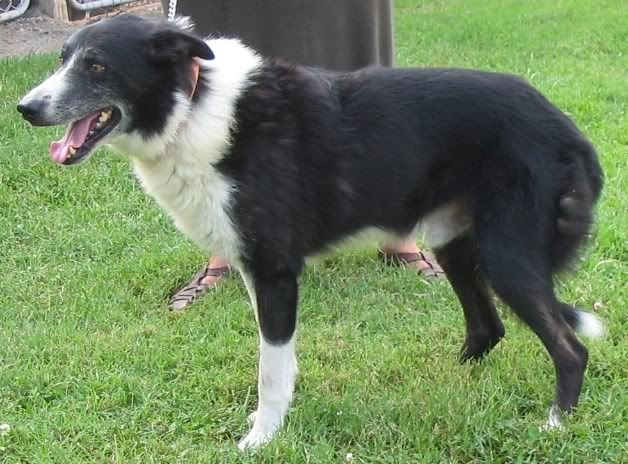brookcove
Posted : 5/25/2006 6:24:08 PM
Is there regular health testing done amongst the breeders of the working BC faction? (I'm just simply curious about this)
The ABCA has been at the forefront of encouraging paticipation in genetic and clinical screening for breeding stock. Eye and hip screened predecessors are called out on the pedigree you would get when researching planned breedings or when you get a pup. They gave thousands and thousands to the search for the genetic marker for collie eye anomaly, and now that the test is on the market (thank God), they are forwarding research on behalf of idiopathic seizure disorder, late onset hearing loss, and CHD.
There hasn't been any pressure other than encouragement and leading by example exerted on individual breeders to comply with recommended health screening standards. The working breeders are a truly independent lot - but allowing them time to feel they've come to the standard of their own volition is well worth it - because they are even more passionate than they are independent and stubborn! The pressure of what their customers are looking for is creating a rapid shift from near non-compliance to full support for the ABCA health recommendations and programs.
. Coat type goes back to protection...can a BC that has a thin coat work well for a sheep farmer in the mountains in the winter? The reason these things set apart champions is because the fancy has decided that in order to best serve their original purpose, these physical attributes need to be in place. I'm very surprised that anyone involved with a working breed cannot see the merits of correct physical make-up.
Historically, if the coat works, it works - dogs that freeze to death don't go on to reproduce, in frank terms. We are distanced from those harsh initial selection forces, at least some of us are (there ARE many dogs that still live by survival of the fittest here and overseas), but we still recognize that a wide variety of coat types work vary well in a variety of working situations, and that selecting against one versus another is needless narrowing of the genepool.
Many are surprised that the slick coat (seen in Laura's June, in her avatar, and in the two dogs below) originated in the very harsh winter conditions of the Scottish hills. It doesn't make sense until you consider that lack of hair between the toes is an asset in heavy snow when ice buildup can cripple a heavy-coated dog. Many times near-natural selection forces in association with unalloyed function, will come up with answers that would seem counterintuitive to someone approaching it from a conformational point of view. Nevertheless, some dogs were smooth (slick) coated and some not and some in between - any weather-proof, dirt shedding coat will do.
It's the same with foot shape, chest size, joint conformation, size, topline, and many other things that you'd think would make a huge difference. The fact is that after generations of breeding to a single fuctional standard, no real phenotype has emerged that would enable us to pick out the dogs that can "do it" just by evaluating coat and color and head shape, measuring ratios, gaiting, and feeling toplines. As to what endears us to the breed, frankly it's the sight of sheep gathered quietly in impossible conditions, cow calf pairs safely delivered to a new graze, a lamb sorting that seems to flow like magic. In that light even the "homeliest" dog glows with beauty.
Here's the "prettiest" dog I've ever owned - sheer genius with skittish sheep, all business with pushy stock:

Can you imagine this dog being "put up" head to head with any of the typical BCs you might have seen?
Or this dog, of impeccable breeding, the winner of many trials, and the sire of my pup (and Laura's June):

Can you imagine this beast in this breed ring, even cleaned up a bit? I've cleaned him up, and trust me, the ugly goes right down below the dirt and unkempt coat. But the breeding that produced him (and many more similiar to him), has been invaluable in carrying down certain working characteristics from the past to our generation - and this is important -
no other line has carried down those same characteristics. Narrowing our phenotype to exclude these dogs would be an unwise proposition, knowing this.